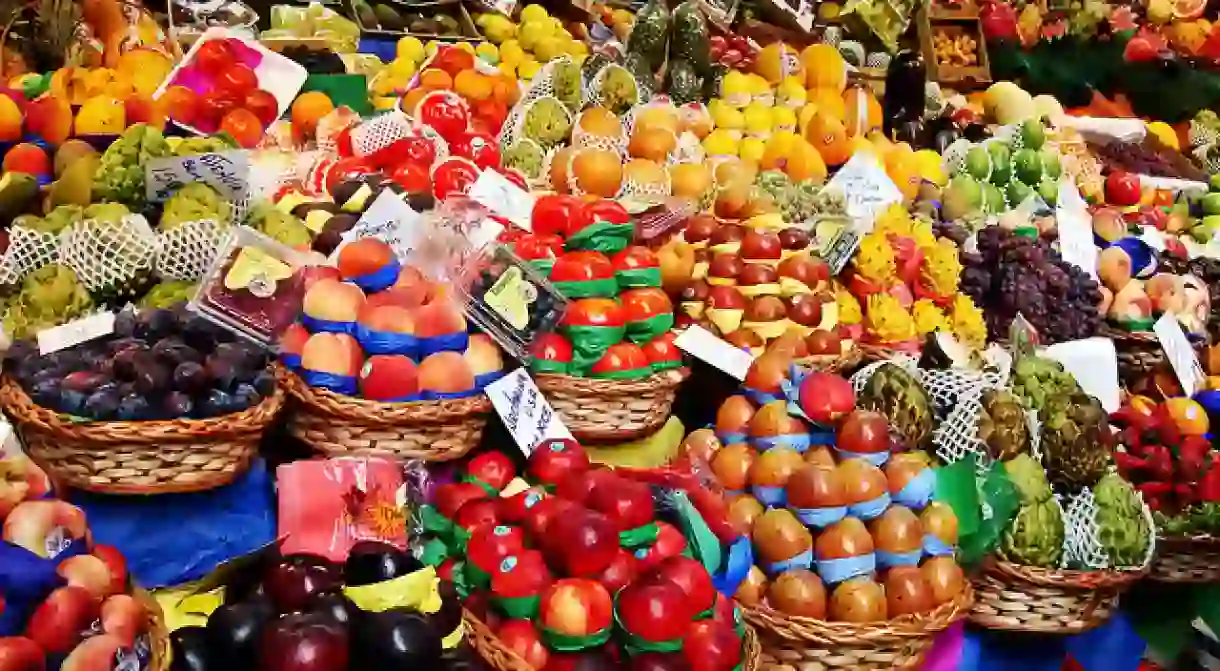A Foodie Guide To São Paulo, Brazil

São Paulo is a hot spot for foodies. The food of this Brazilian metropolis has been praised over and over again, yet the endless options combined with the chaotic layout of a city with over 11 million can leave a first timer overwhelmed and lost in the concrete jungle. Start your trip off with the tips below and you’ll be on the right track.

Mercado Municipal
Market

The best place to start off your culinary tour in São Paulo is the Mercado Municipal, a 12,600 square meter marketplace located in São Paulo’s historic Centro. At the Mercadão, as it is called by locals, you can find the freshest and greatest variety of produce and spices. Passing through the Mercadão’s fruit aisle is a delight, as vendors approach you to taste test their freshest fruit. The stands draw you in with their rainbow of fruit colors. Try the locally grown caquis (persimmons), mango and graviola. As you drift from the sweet aroma of the fruit aisles, the pungent scents of fish and calabresa begin to seep in. São Paulo’s Portuguese, Italian, and Spanish heritage is evident as you walk past dozens of olive oils, bacalhau (dried cod fish), savory sausages, and cheese. Head upstairs to have a real meal: the classics are the mortadella sandwich, a sandwich packed with layers upon layers of the delicious deli meat and pastel de bacalhau, a fried pastry stuffed with imported dried cod, green olives, and onions. The Mercadão has been open since the 1930s; on the weekends and around holidays it is packed with Brazilians from all over the country who come to purchase the best local and imported goods available. Despite the hundreds of people who visit the market, the Centro is a sometimes neglected area of the city by tourists because of its reputation. During the day the Centro is full of people.
Botecos in Vila Madalena Neighborhood
Brazil is synonymous with a good chopp – cold draught beer is taken so seriously here that refrigerators mark the below freezing temperatures on the outside. Luckily a good chopp is easy to find at just about any boteco; these neighborhood bars populate almost every street corner in the Vila Madalena neighborhood, lined up with charming décor and samba playing in the background. The bars on Rua Aspicuelta are especially packed on the weekends, with Paulistas spilling out into the streets as they munch on the greasy bar food with endless chopp and plenty of colarinho (beer head). Classics in the neighborhood include São Cristovão (Rua Aspicuelta, 533) covered in soccer memorabilia, Posto 6 (Rua Aspicuelta, 646), its name an homage to the actual Posto 6, a hot spot on the beaches of Copacabana in Rio de Janeiro, and José Menino (Rua Aspicuelta, 596) a two-floor samba-playing, traditional boteco with delicious grilled meat and of course chopp.

Bar da Dona Onça
Bar, Restaurant, Brazilian, Beer, South American

Underneath the undulating curves of Oscar Niemeyer’s Copan building sits a haven for Brazilian comfort food. Bar da Dona Onça serves no-frills home cooking in generous portions, alongside fruity caiprinhas. The menu includes a long list of rice dishes like arroz de bacalhau com ovo caipira frito, and bife acebolado. The restaurants caipirinhas includes the classic caiprinha – a cachaça (Brazilian alcohol made from sugar-cane), lime, and sugar cocktail to more exotic versions starring passion fruit, tangerine, and lima da persia (sweet lime).
Riviera Bar
Bar, Restaurant, Brazilian, Contemporary
Pastel de Maria
La da Venda
Star City
Restaurant, Brazilian
Cantina de Castelões
Restaurant, Italian, Brazilian













